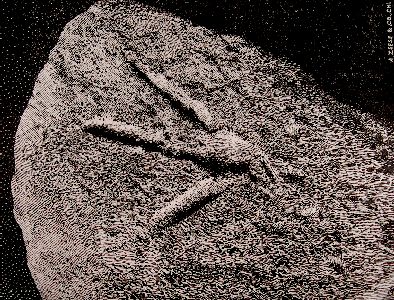Suggested references:
Anonymous. 1888. A Cretaceous bird-track, American Naturalist, 22(253):55.
Chinsamy, A., L. D. Martin and P. Dodson, 1998. Bone microstructure of the diving Hesperornis
and the volant Ichthyornis from the Niobrara Chalk of western Kansas. Cret. Research
19:225-235.
Marsh, O. C., 1872a. Discovery of a remarkable fossil bird. American Journal of
Science 3(13)56-57.
Marsh, O. C., 1872b. Notice of a new and remarkable fossil bird. American Journal of
Science, Series 3, 4(22):344.
Marsh, O. C., 1872c. Notice of a new reptile from the Cretaceous. American Journal of
Science, Series 3, 4(23):406.
Marsh, O. C., 1873. Fossil birds from the Cretaceous of North America. American
Journal of Science, series 3, 5(27):229-231.
Marsh, O. C., 1880. Synopsis of American Cretaceous birds. Appendix pp. 191-199 In
Odontornithes: A monograph on the extinct toothed birds of North America. U.S. Geological
Exploration of the 40th Parallel, Clarence King, Geologist-in-charge, vol. 7, xv + 201
pp., 34 pl.
Marsh, O. C., 1883. Birds with Teeth. United States Geological Survey, 3rd Annual
Report of the Secretary of the Interior, 3:43-88. Government Printing Office, Washington,
D.C.
Martin, L. D., 1984. A new hesperornithid and the relationships of the Mesozoic birds.
Kansas Academy Science, Transactions 87:141-150.
Martin, L. D. and J. Tate Jr., 1966. A bird with teeth. Museum Notes, University of
Nebraska State Museum, 29:1-2.
Mudge, B. F., 1866. Discovery of fossil footmarks in the Liassic (?) Formation in
Kansas. American Journal of Science, ser. 2, 41(122):174-176.
Mudge, B. F., 1873. Recent discoveries of fossil footprints in Kansas. Kansas Academy
of Science, Transactions 2:71-74.
Peterson, J. M., 1987. Science in Kansas: The early years, 1804-1875, Kansas History
Magazine, 10(3):201-240.
Snow, F. H. 1887. On the Discovery of a fossil bird track in the Dakota Sandstone.
Kansas Academy of Science, Transactions 10:3-6.
Walker, M. V., 1967. Revival of interest in the toothed birds of Kansas. Kansas Academy
of Science, Transactions 70(1):60-66.
Williston, S. W., 1898. Part I. Addenda to Part I [a history of fossil collecting in
western Kansas, from 1868-1898]. pp. 28-32 In The University Geological Survey of
Kansas. 4:594 p., 120 pls.
Williston, S. W. 1898. Bird Tracks from the Dakota Cretaceous. The University
Geological Survey of Kansas, Part II, 4:43-53, pls. 5-8.
Williston, S. W., 1898. Birds. The University Geological Survey of Kansas, Part
II, 4:43-53, pls. 5-8.
Credits: I thank Earl Manning for providing a Xerox of
the 1888 anonymous note in the American Naturalist.


